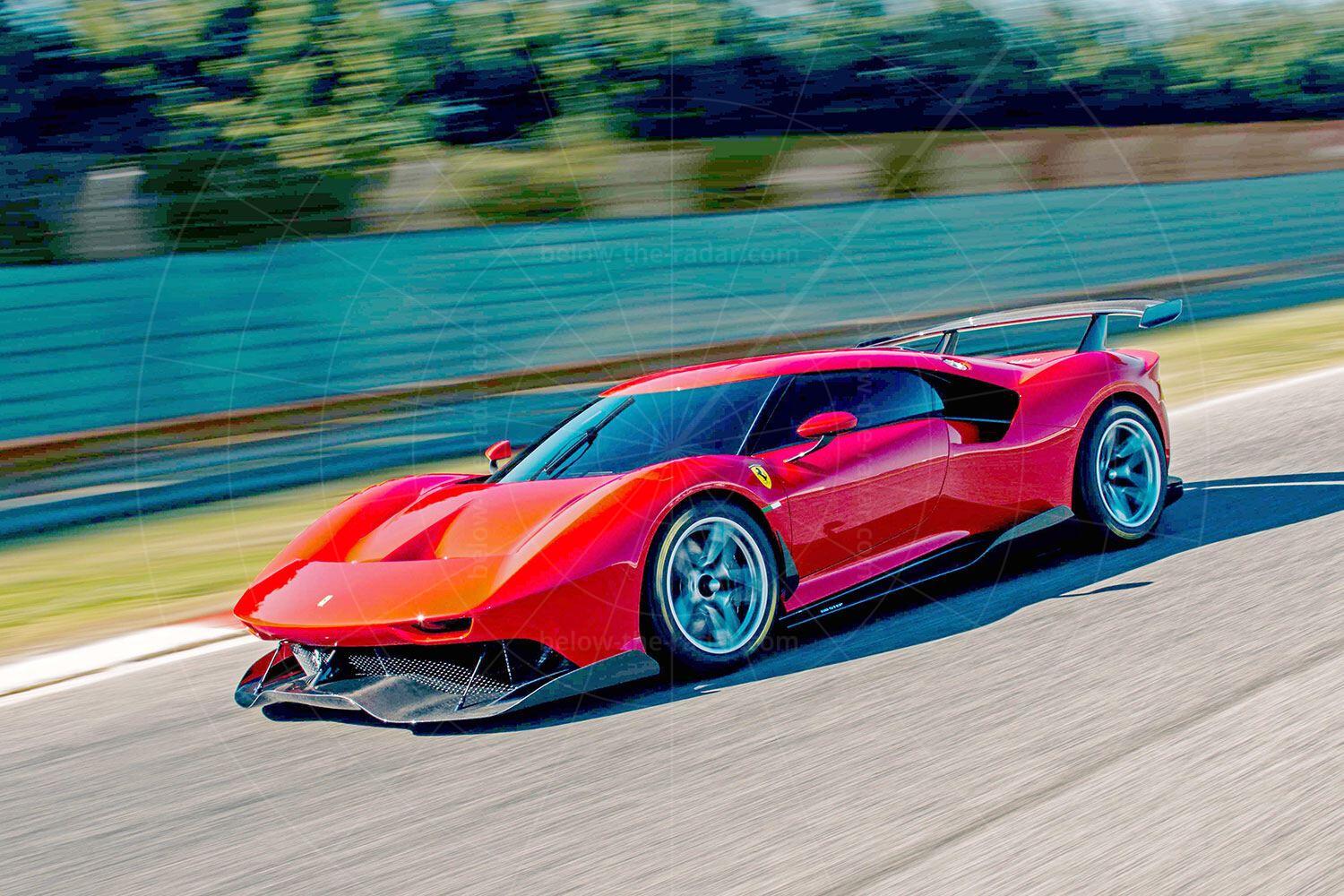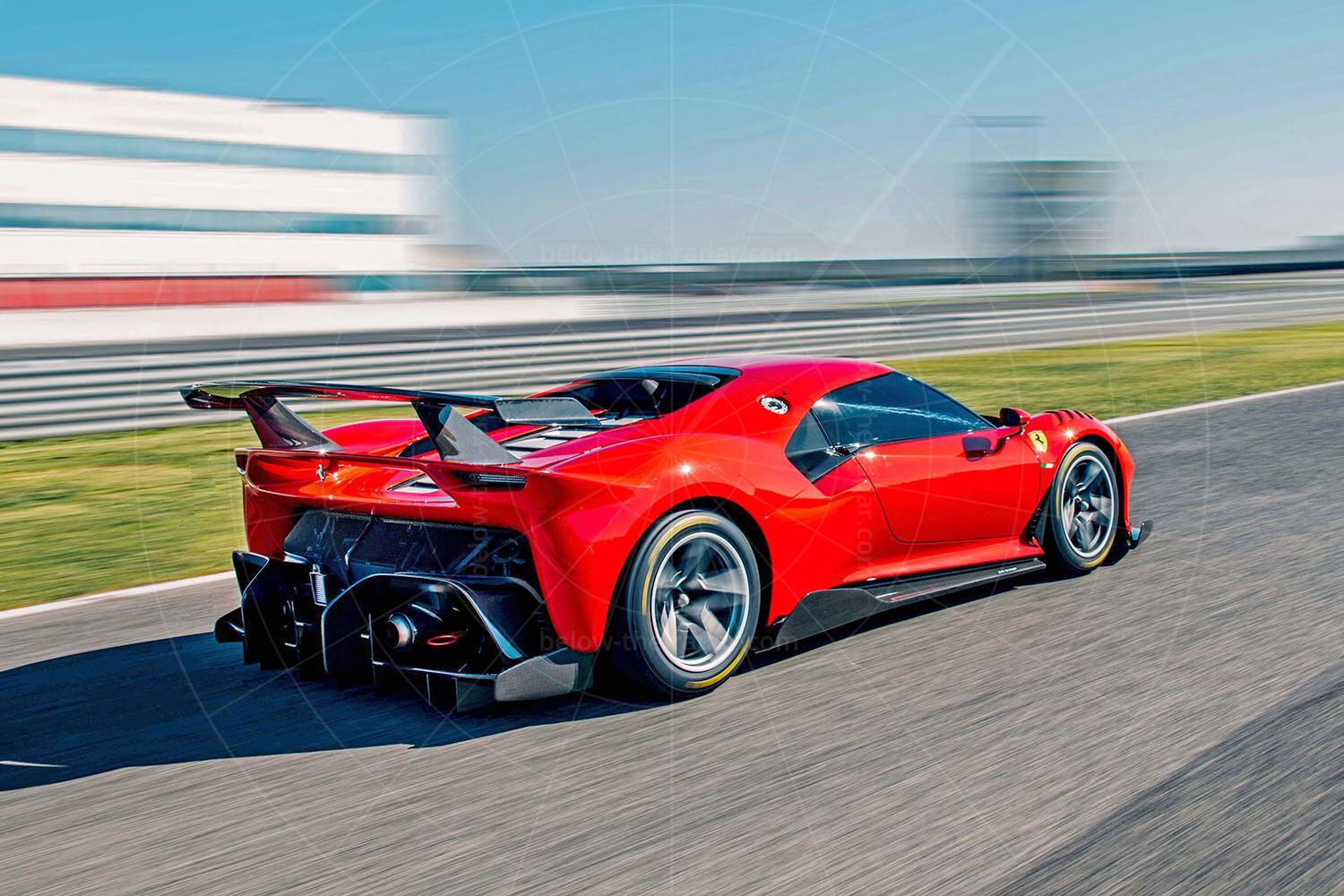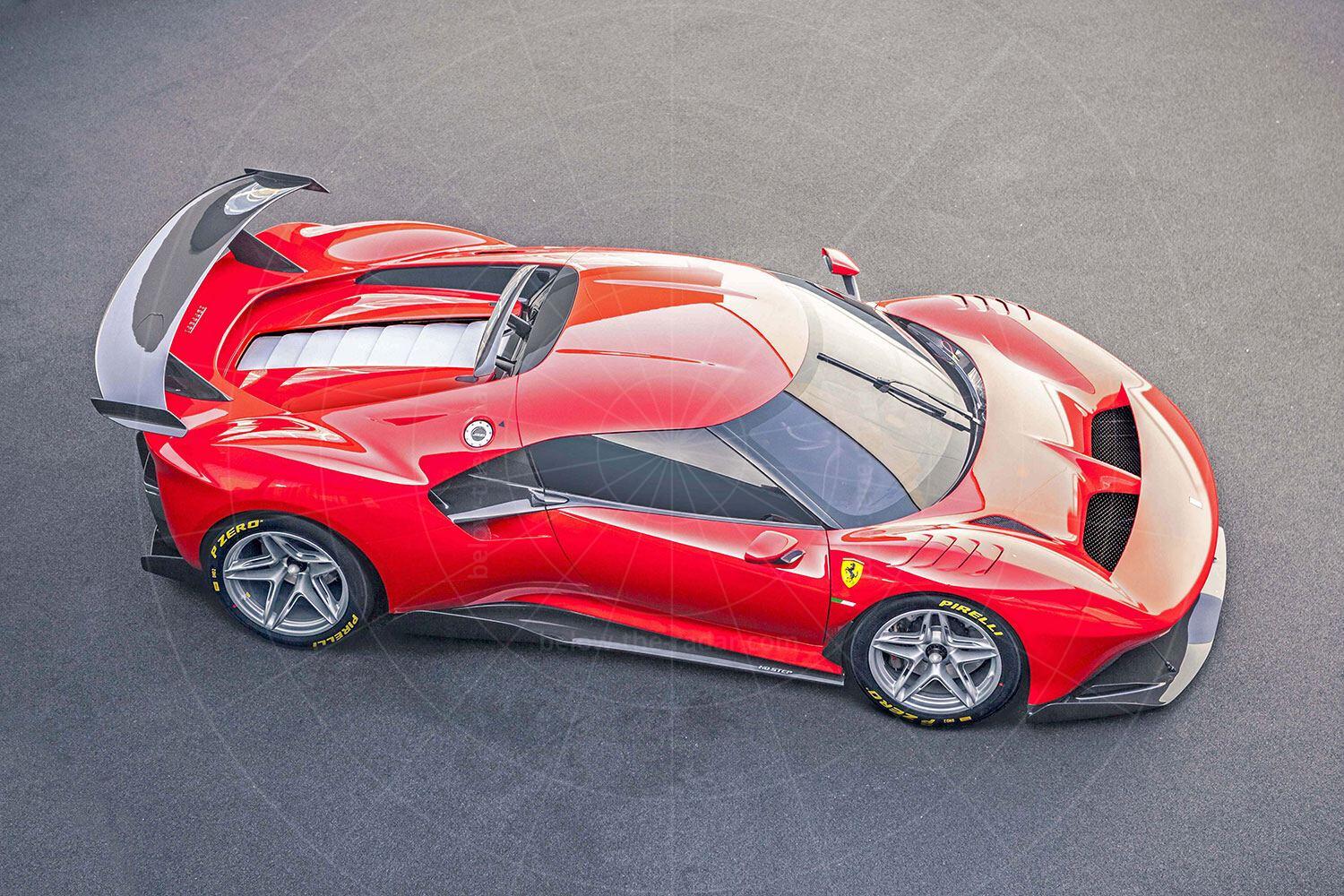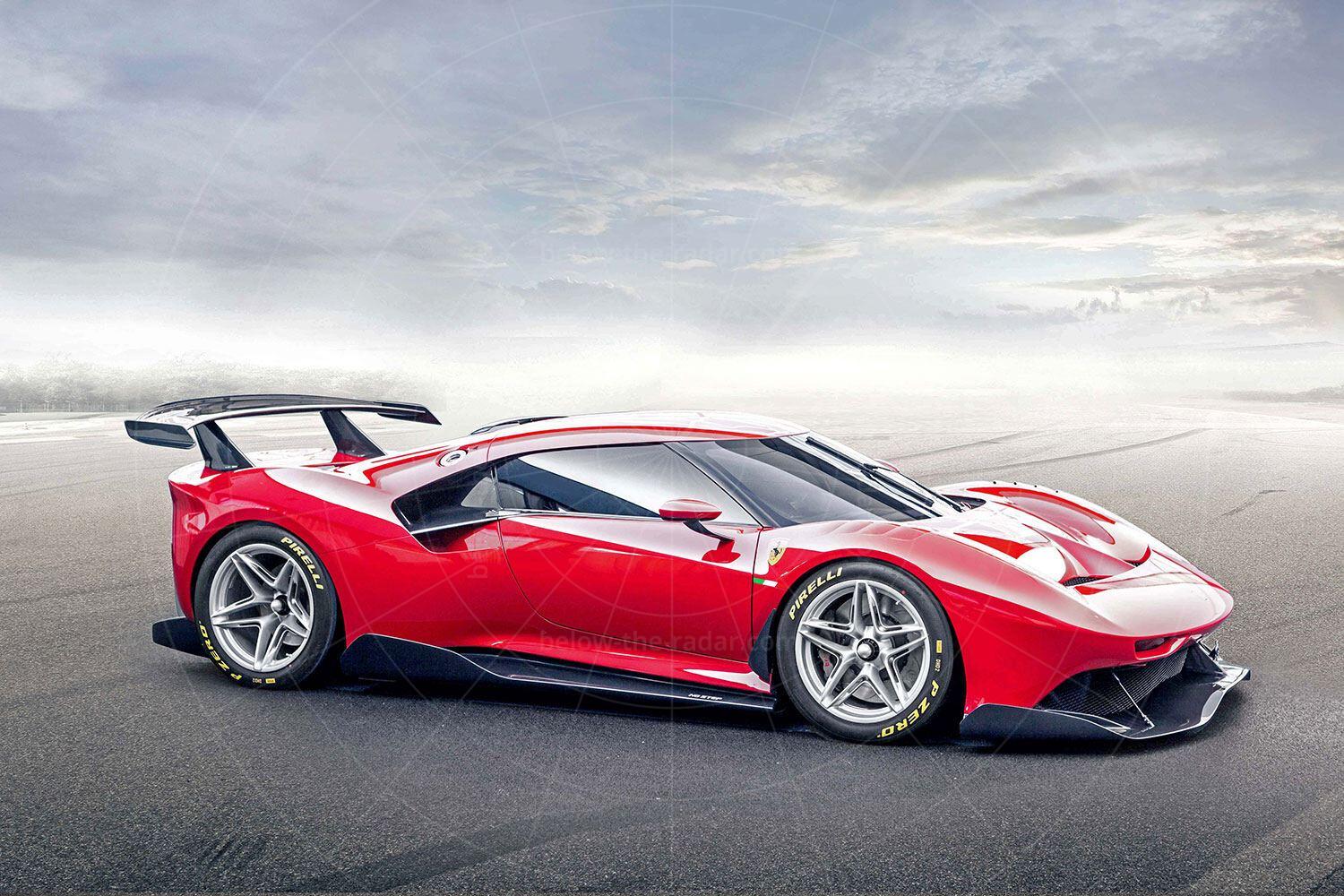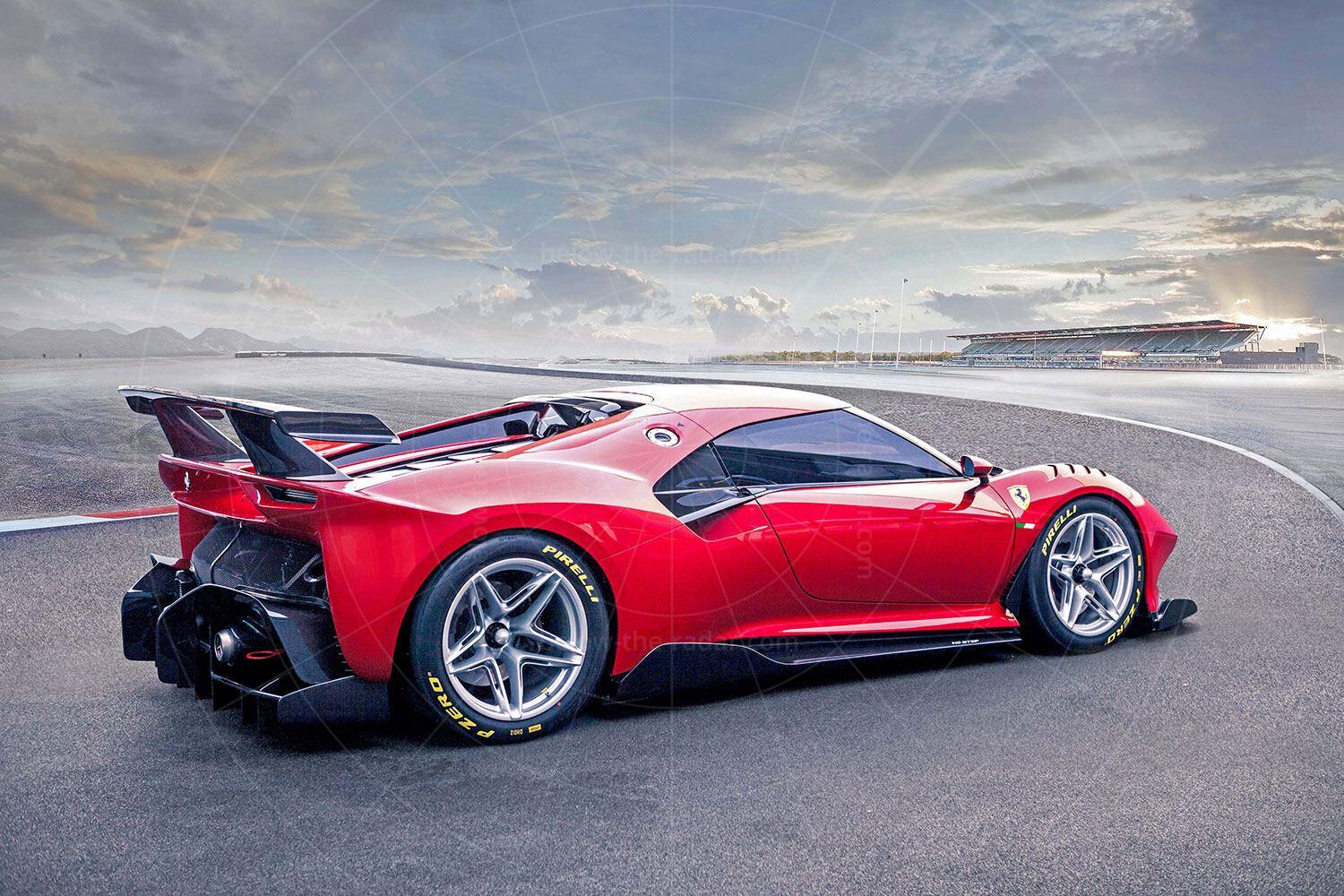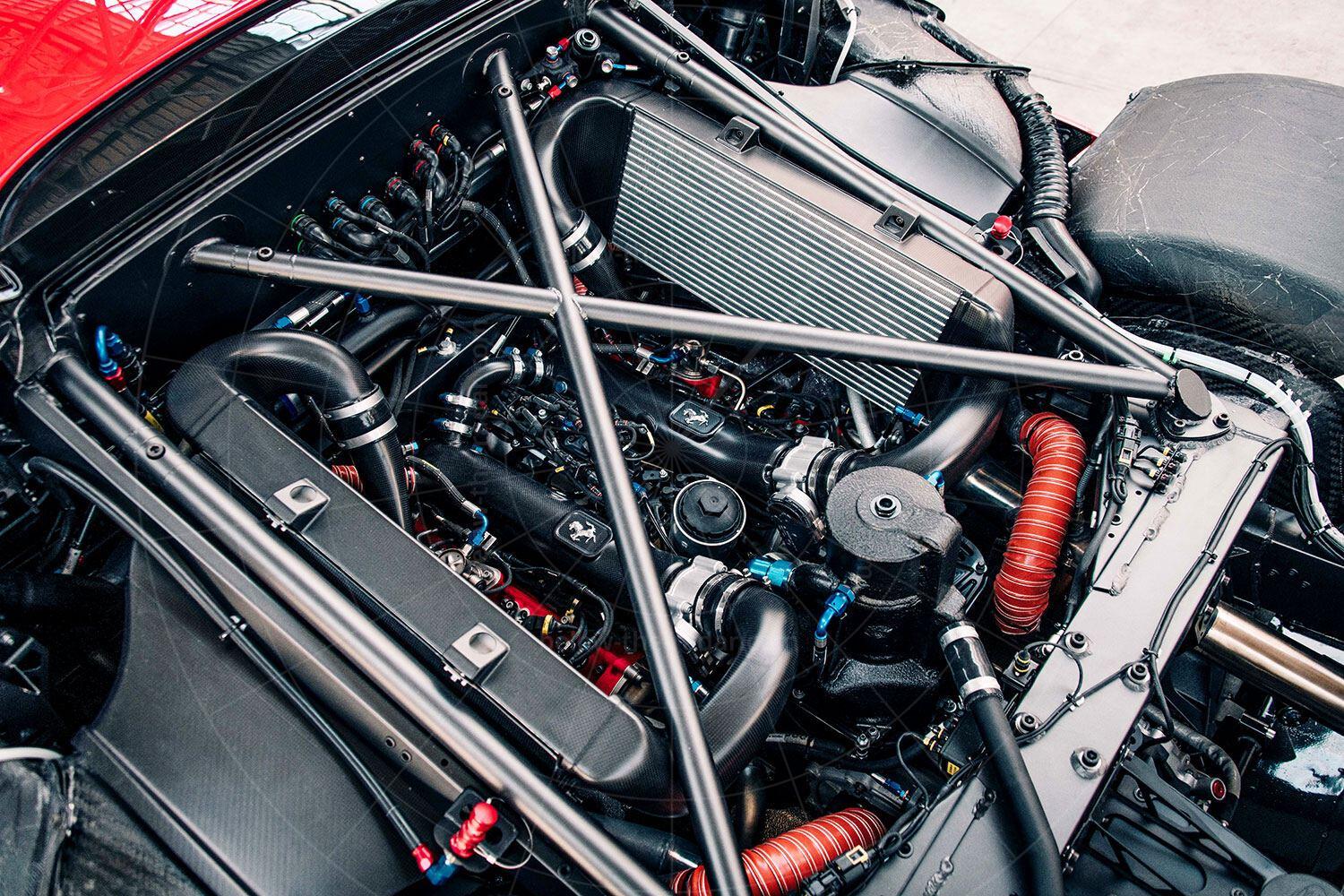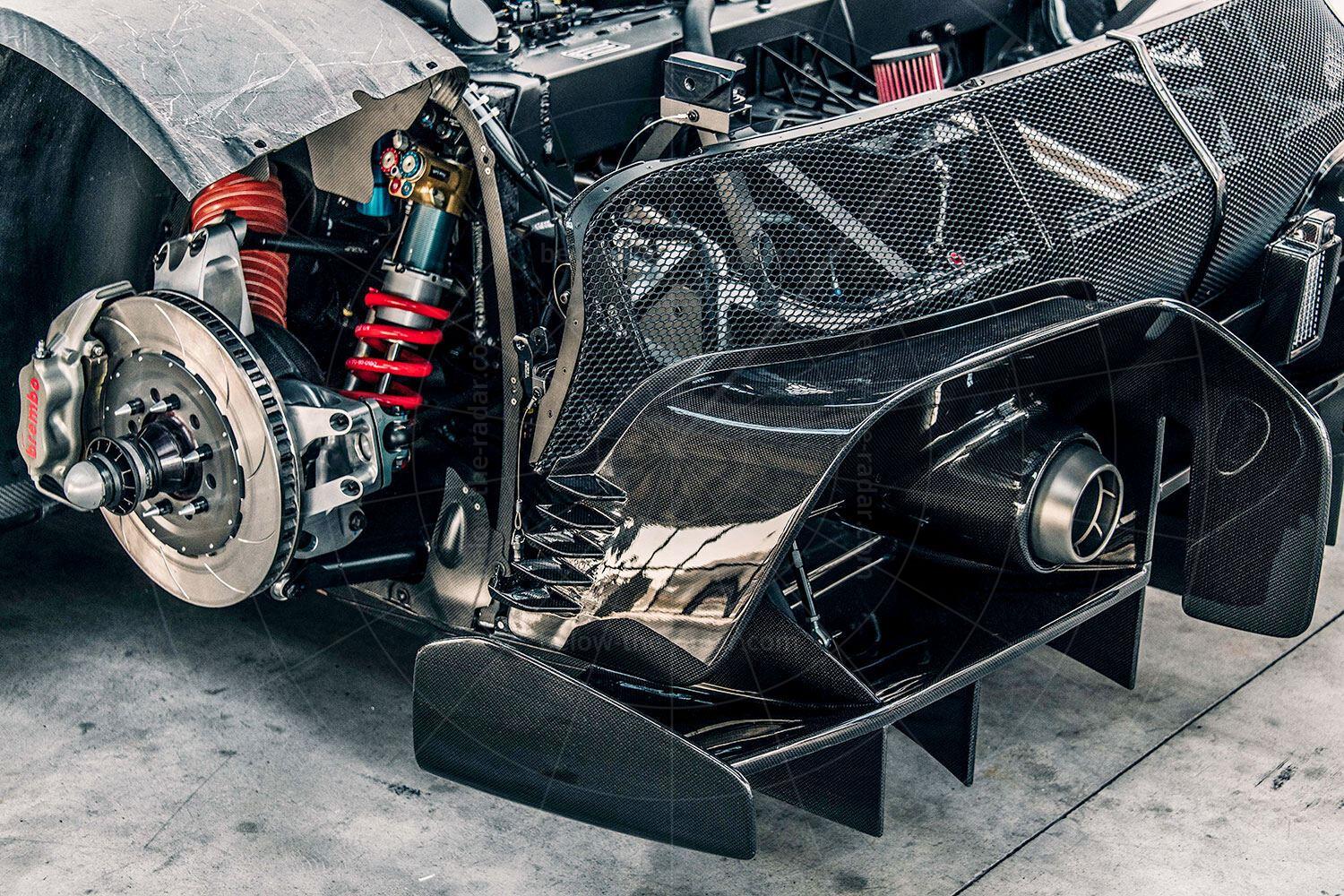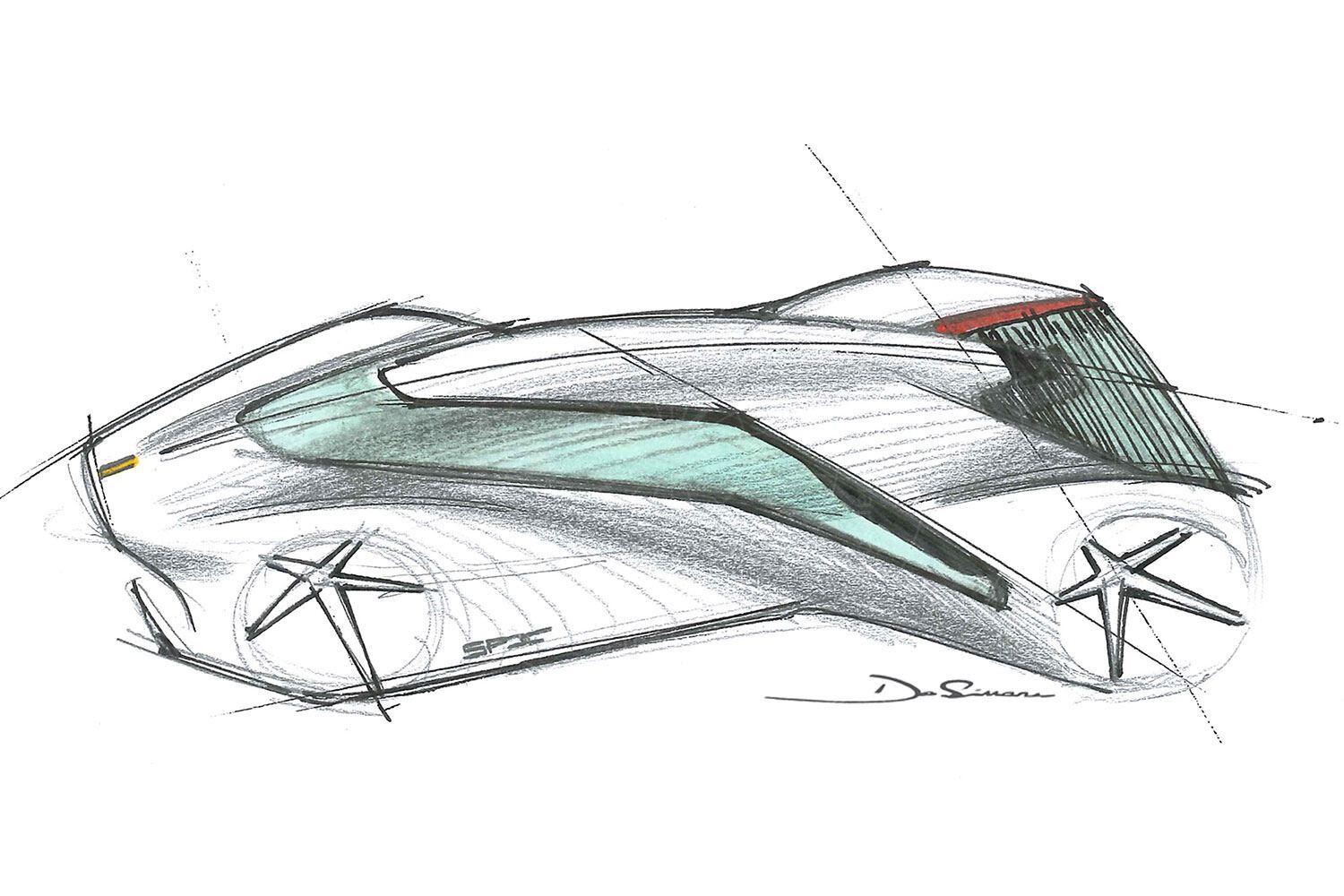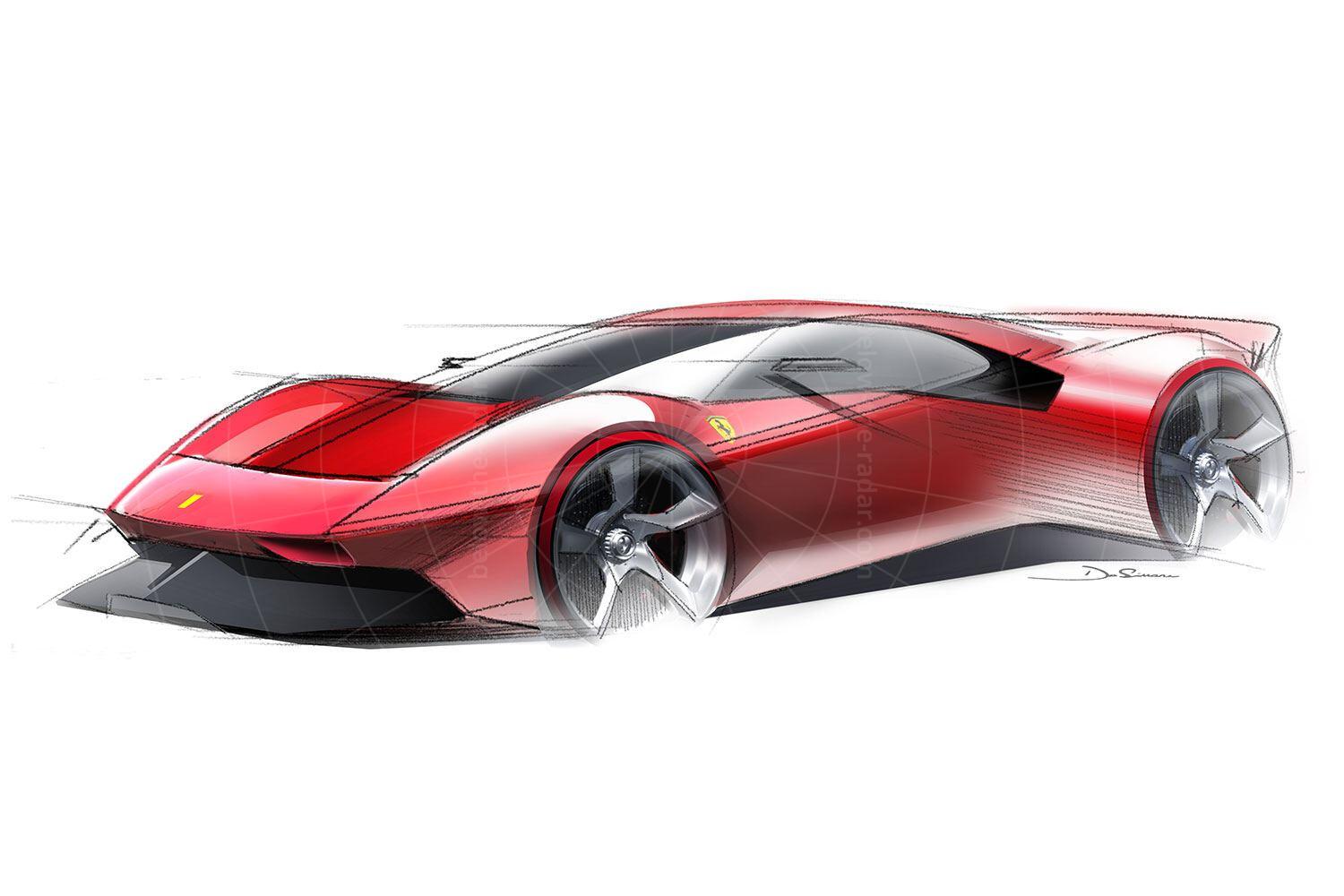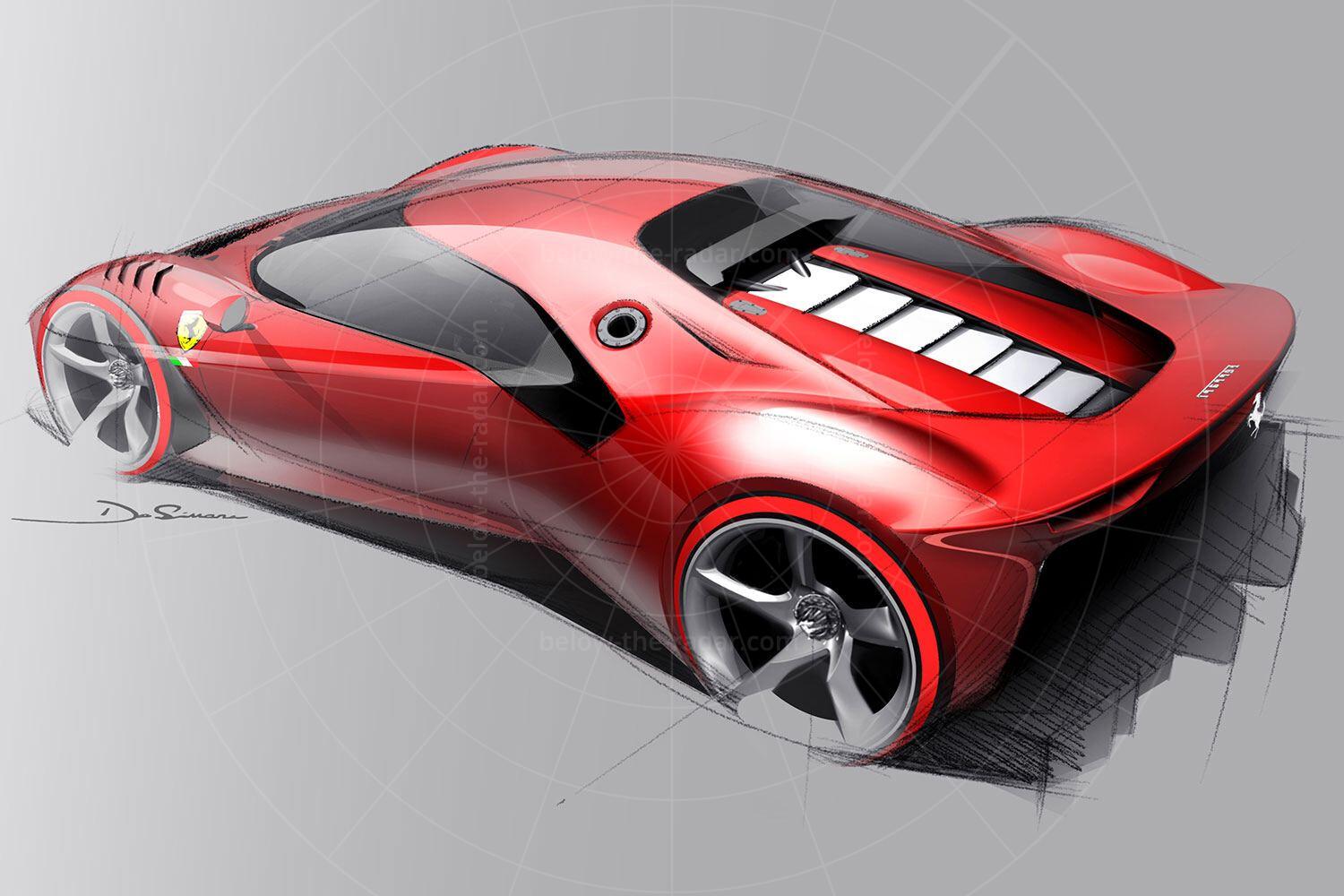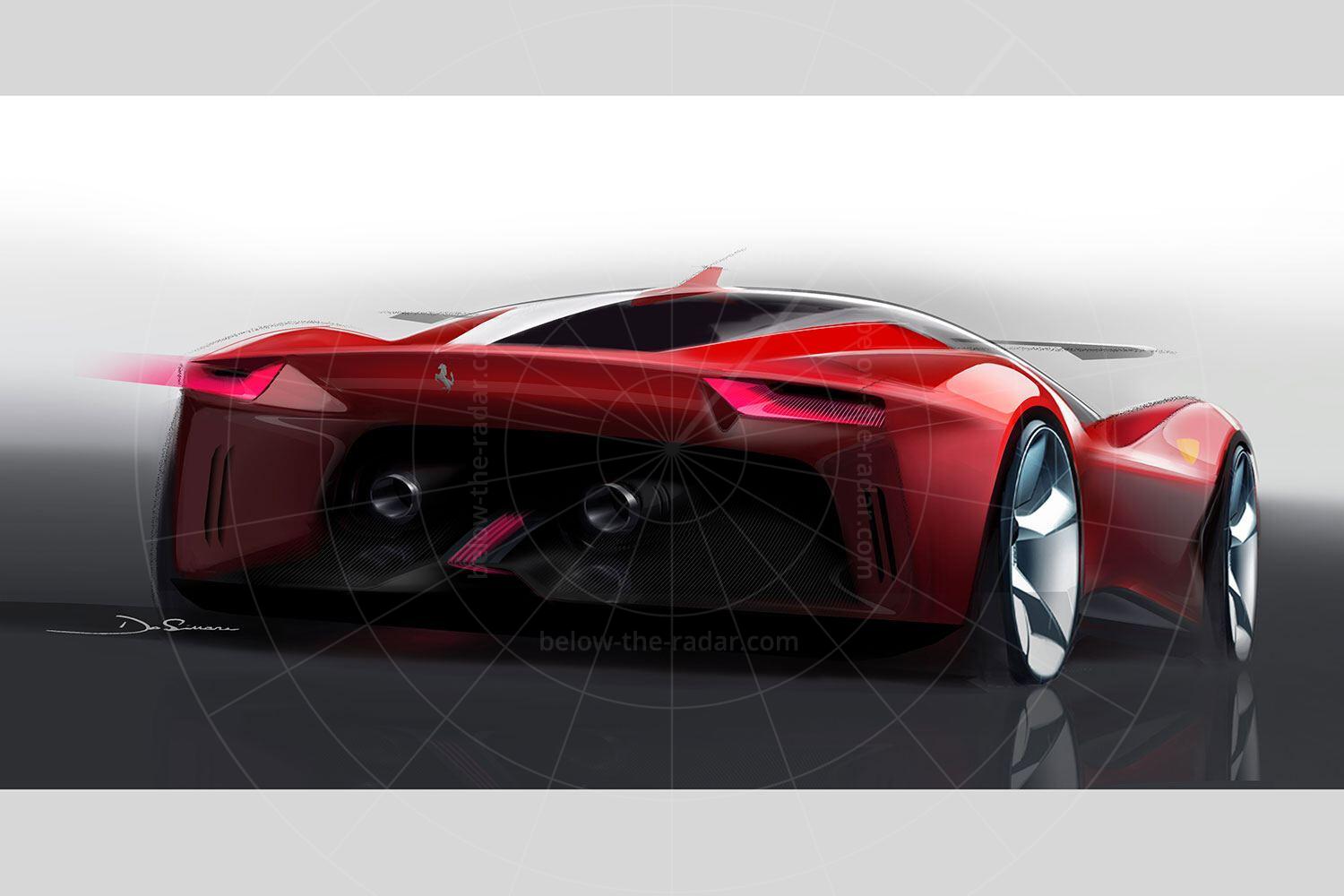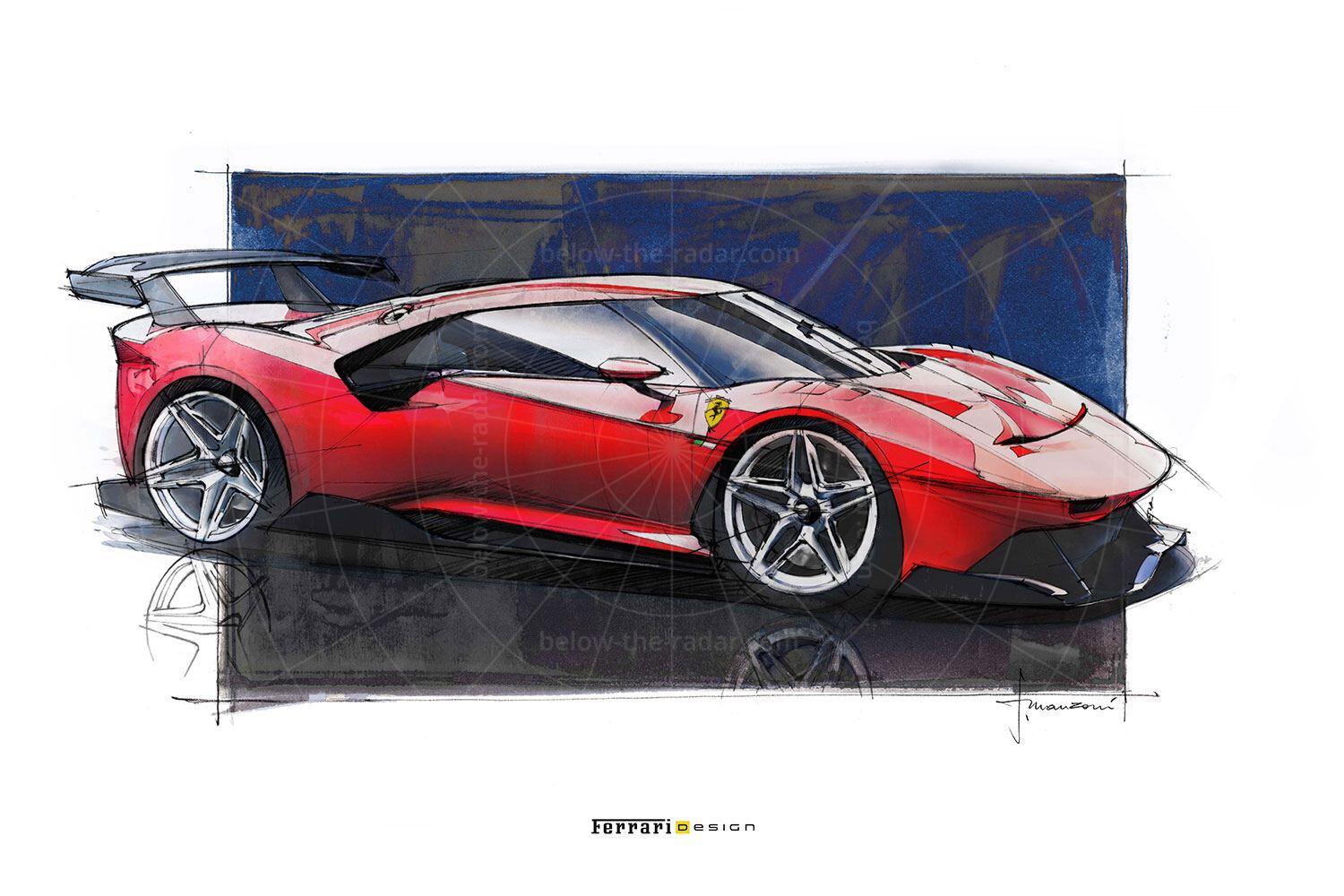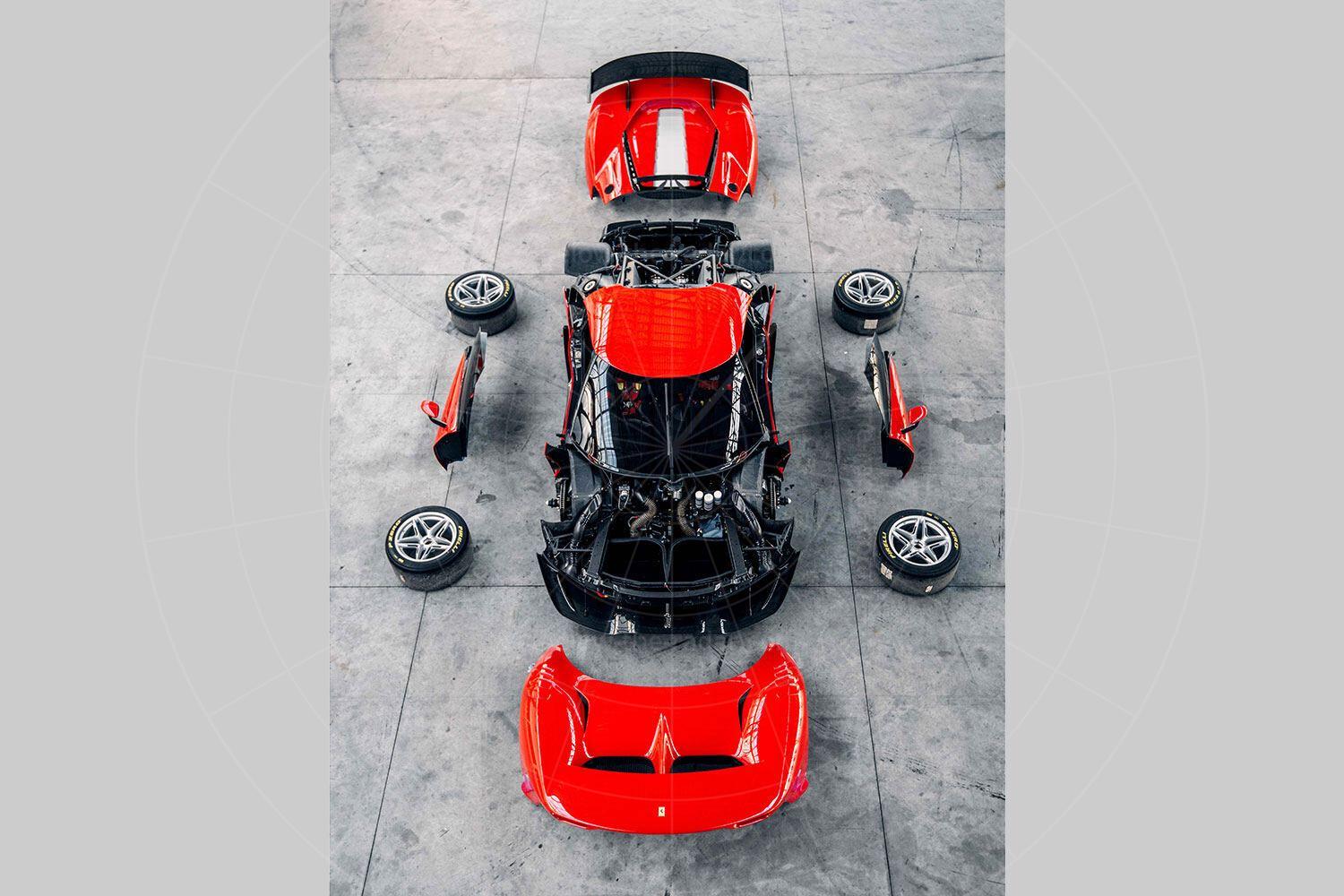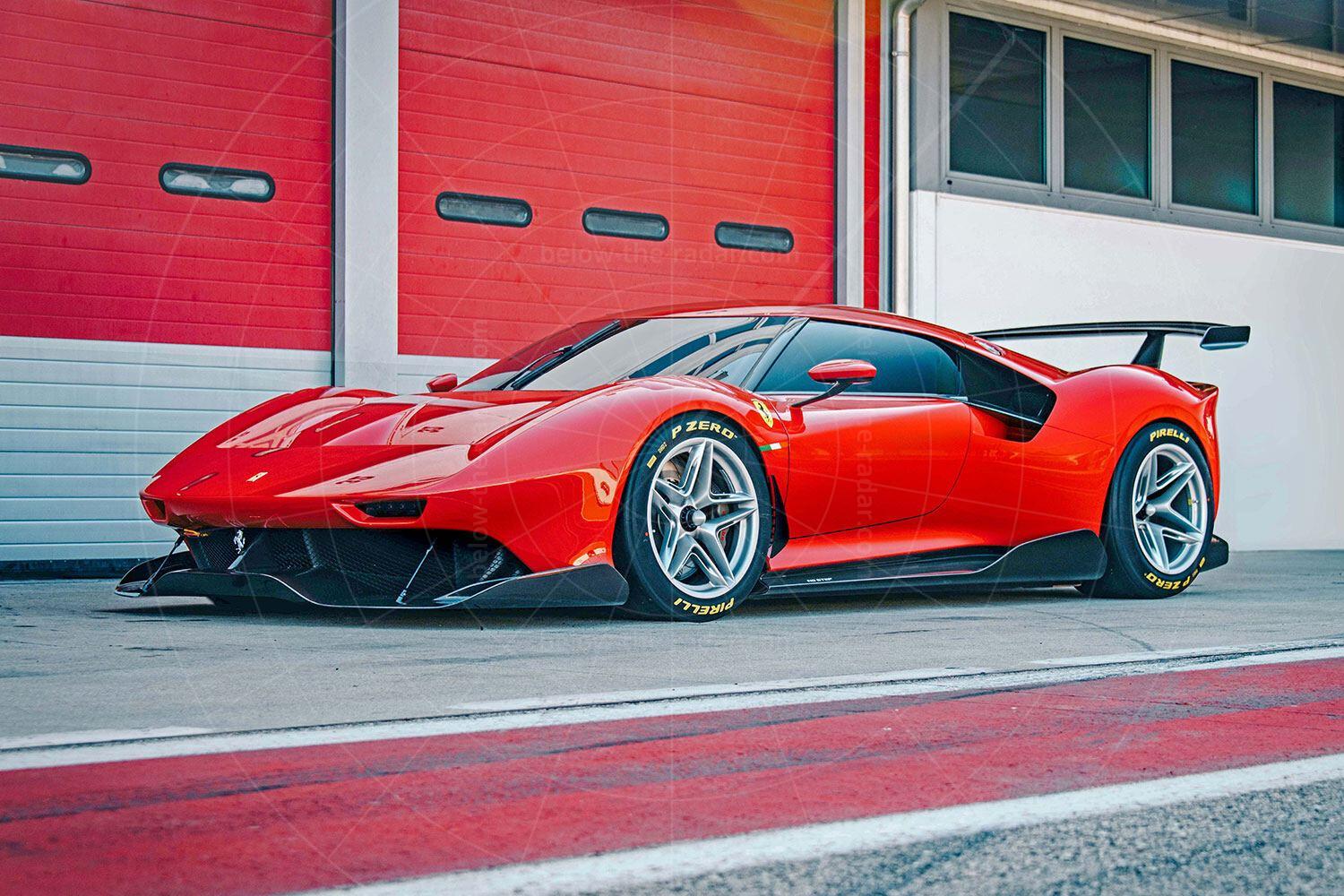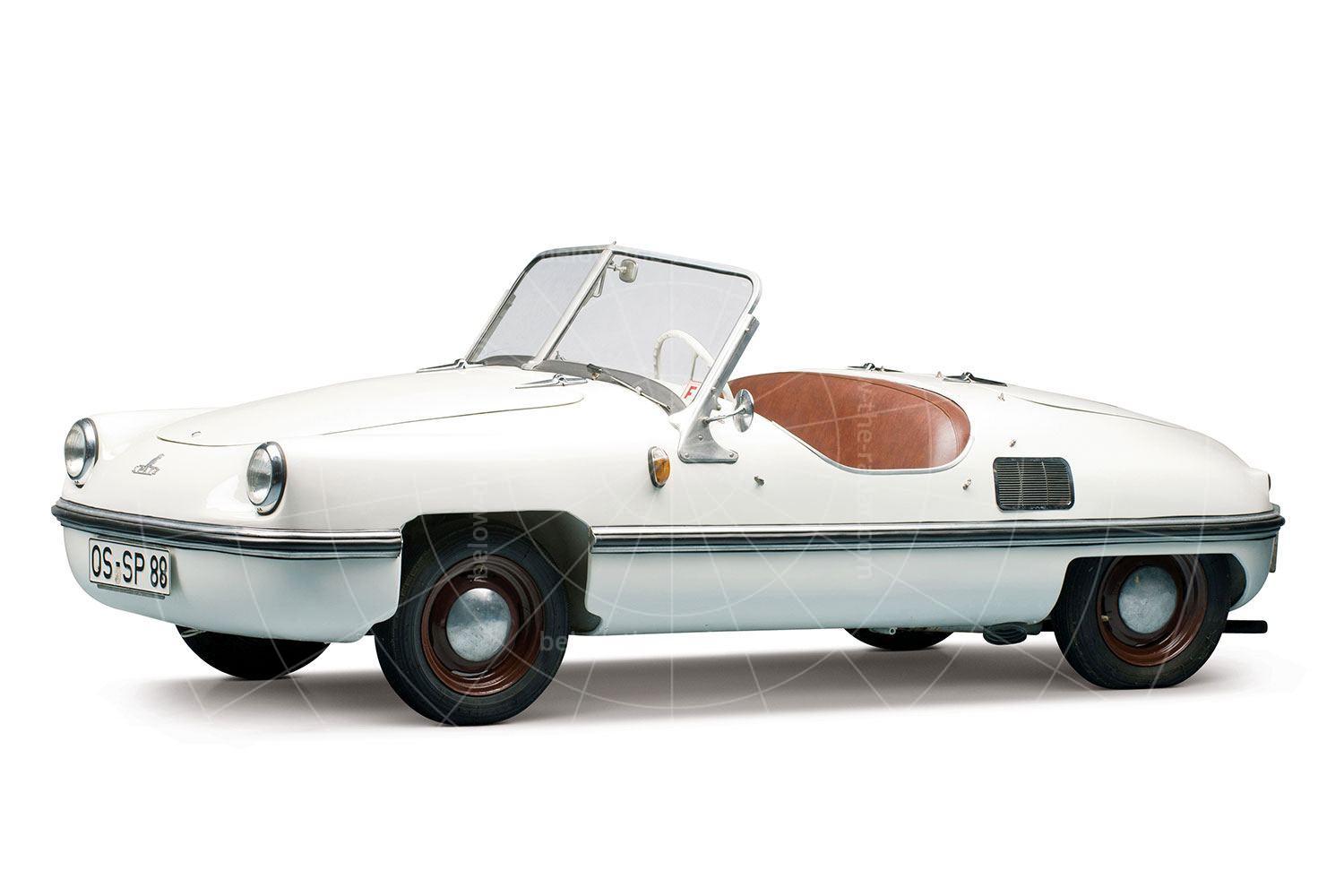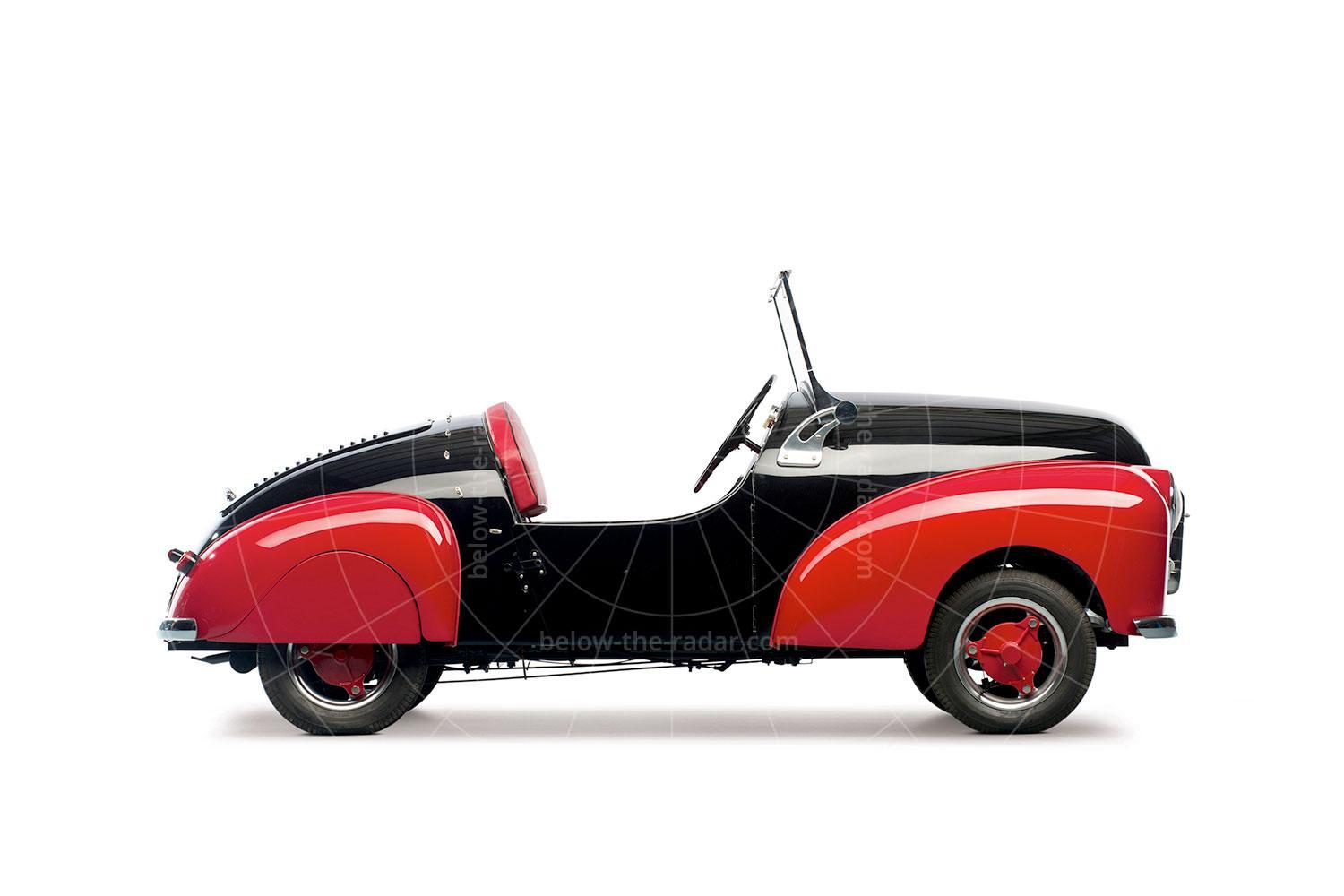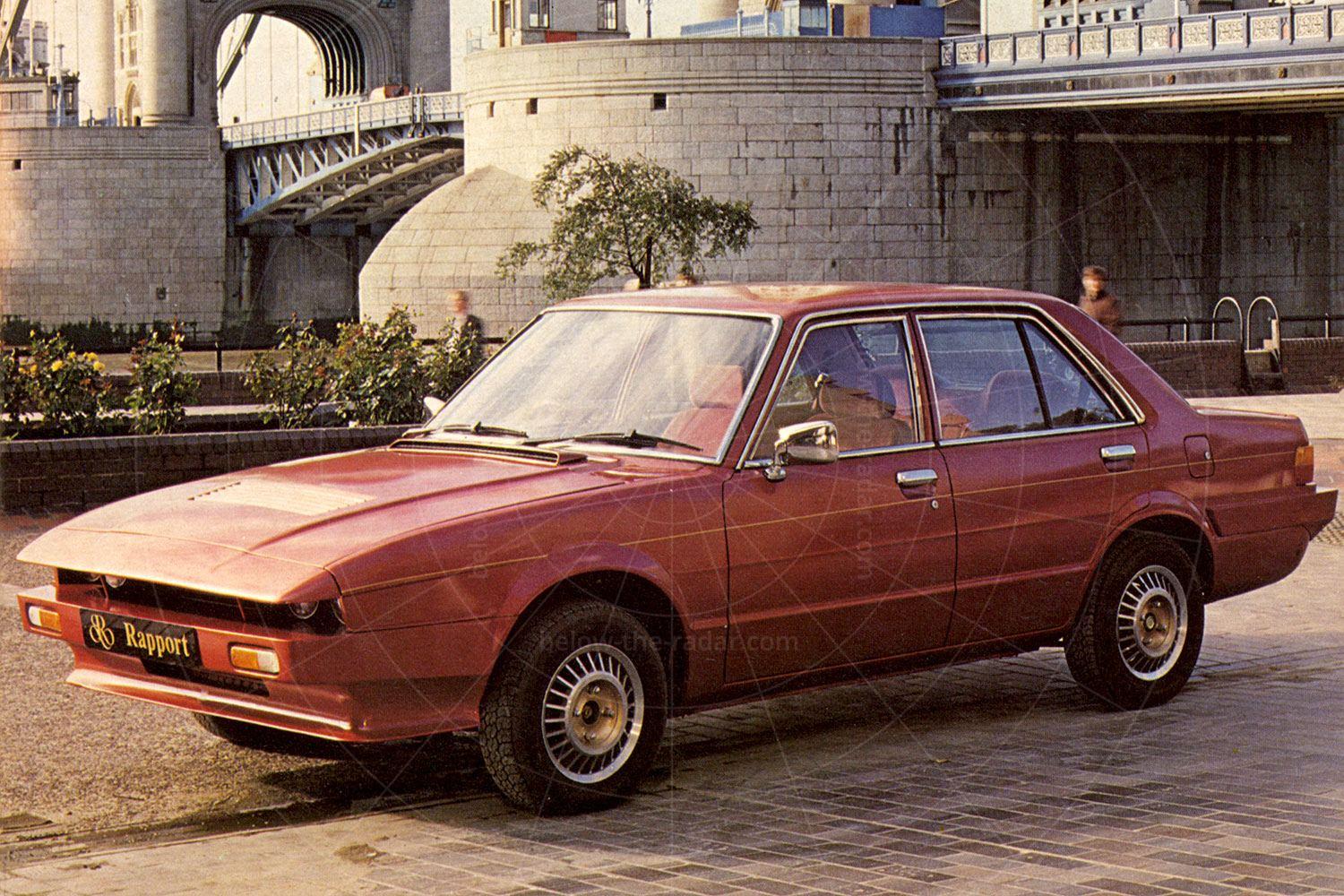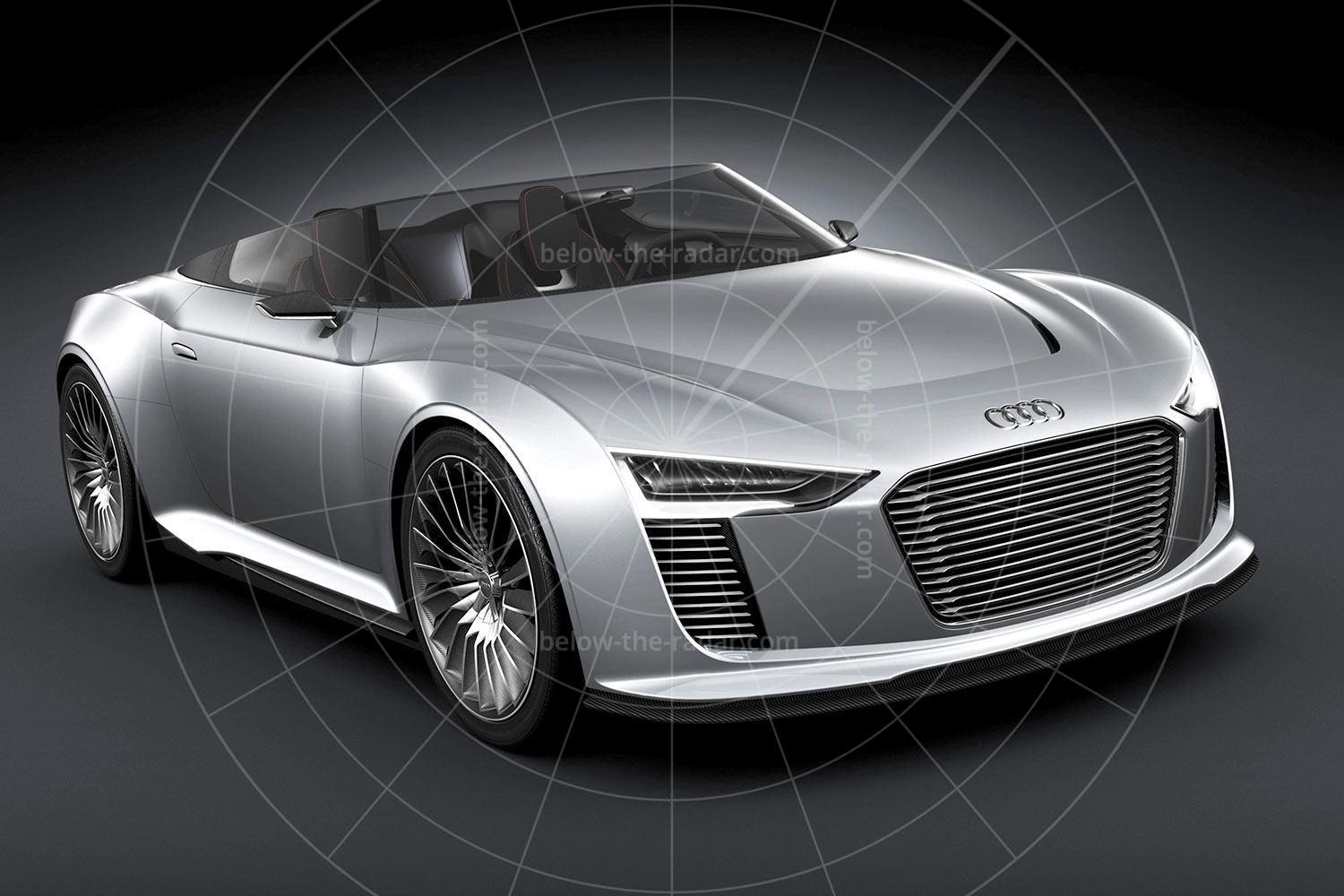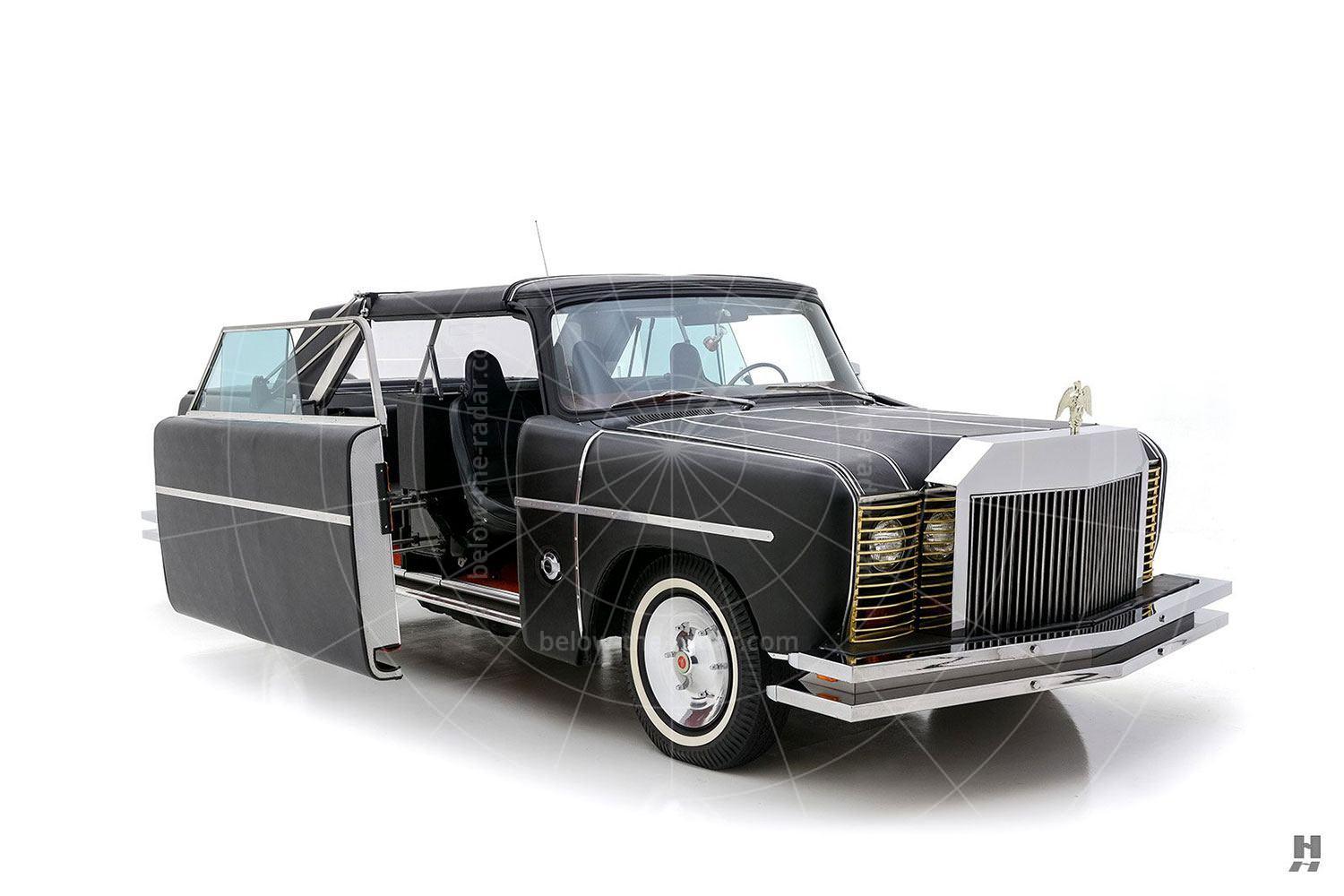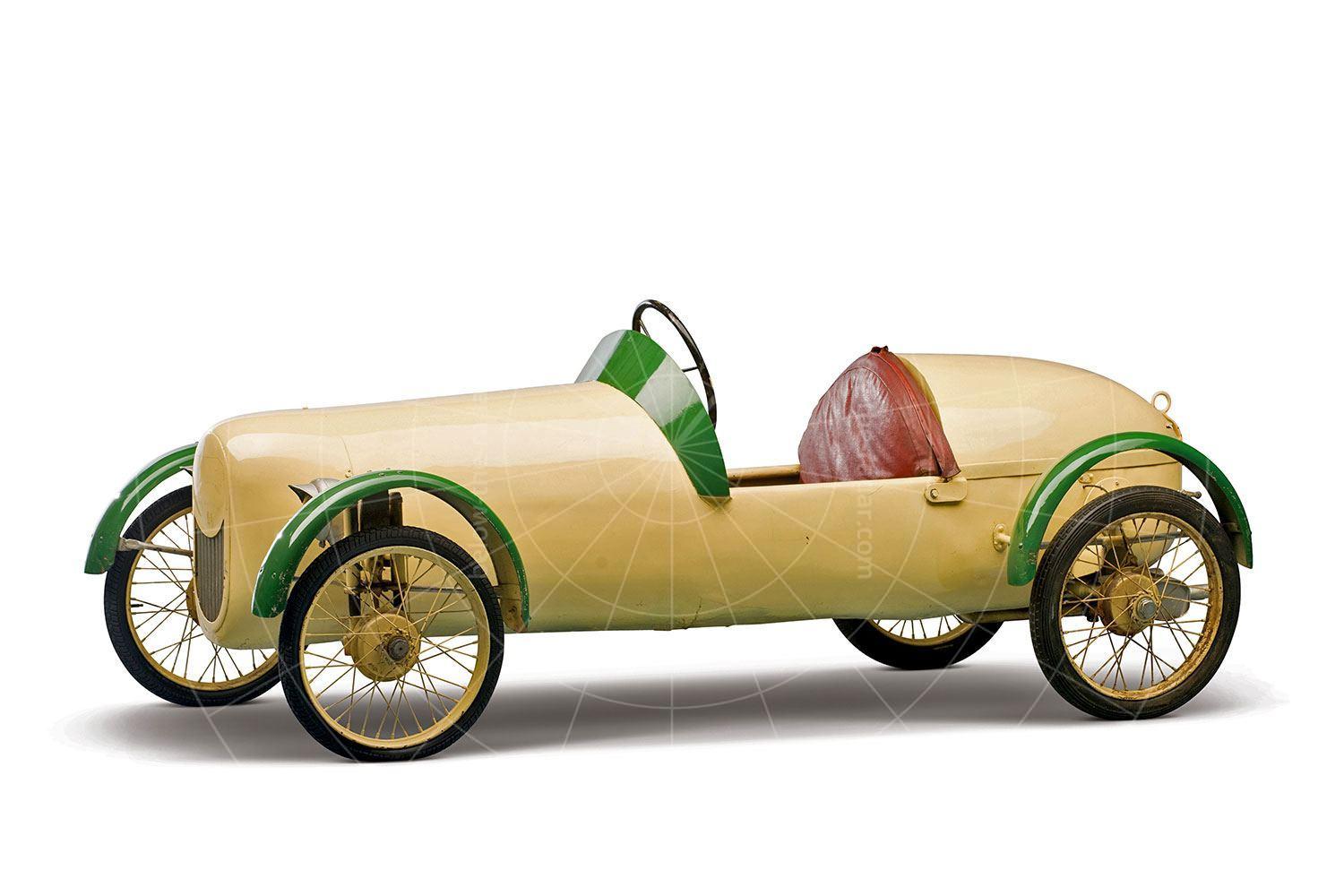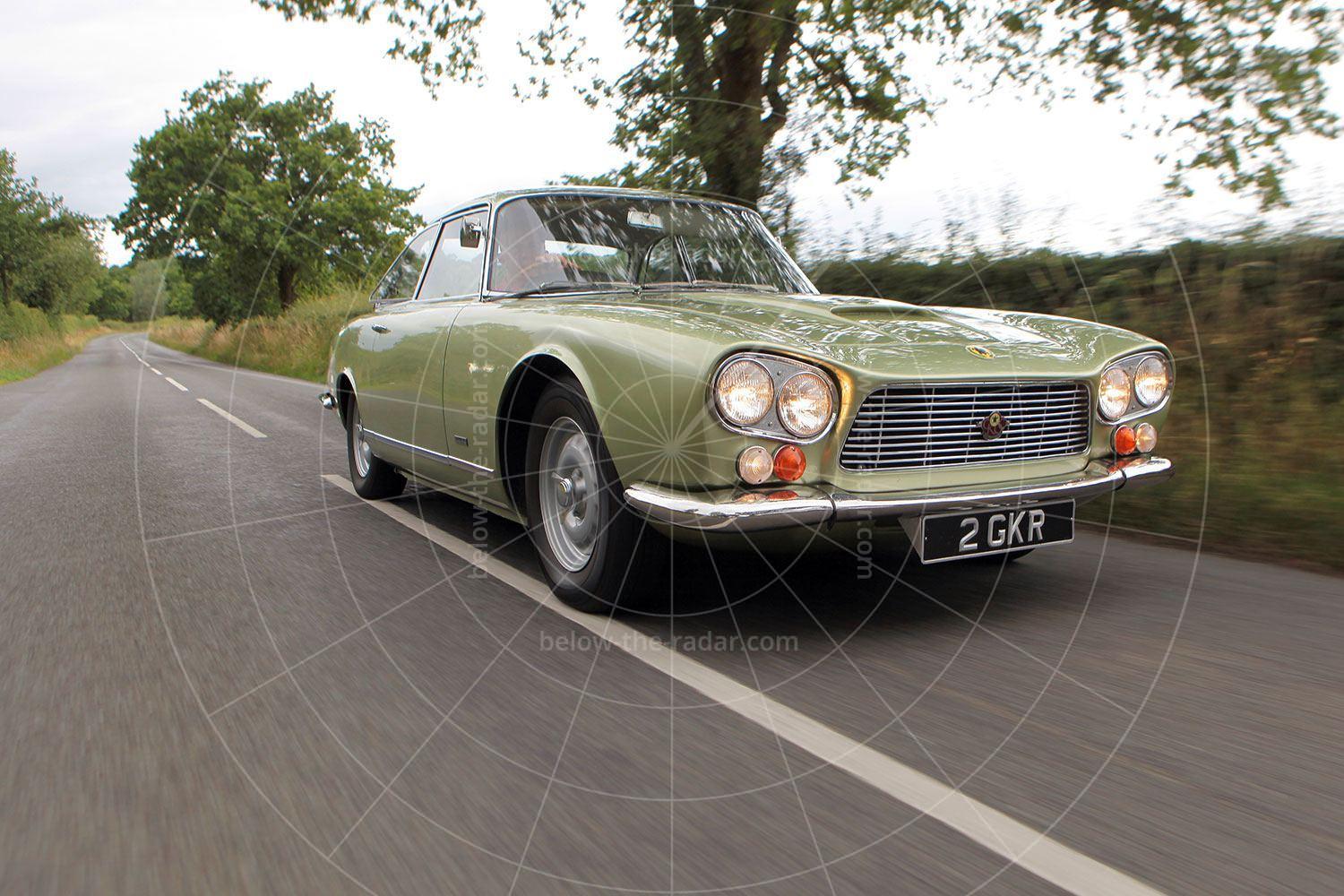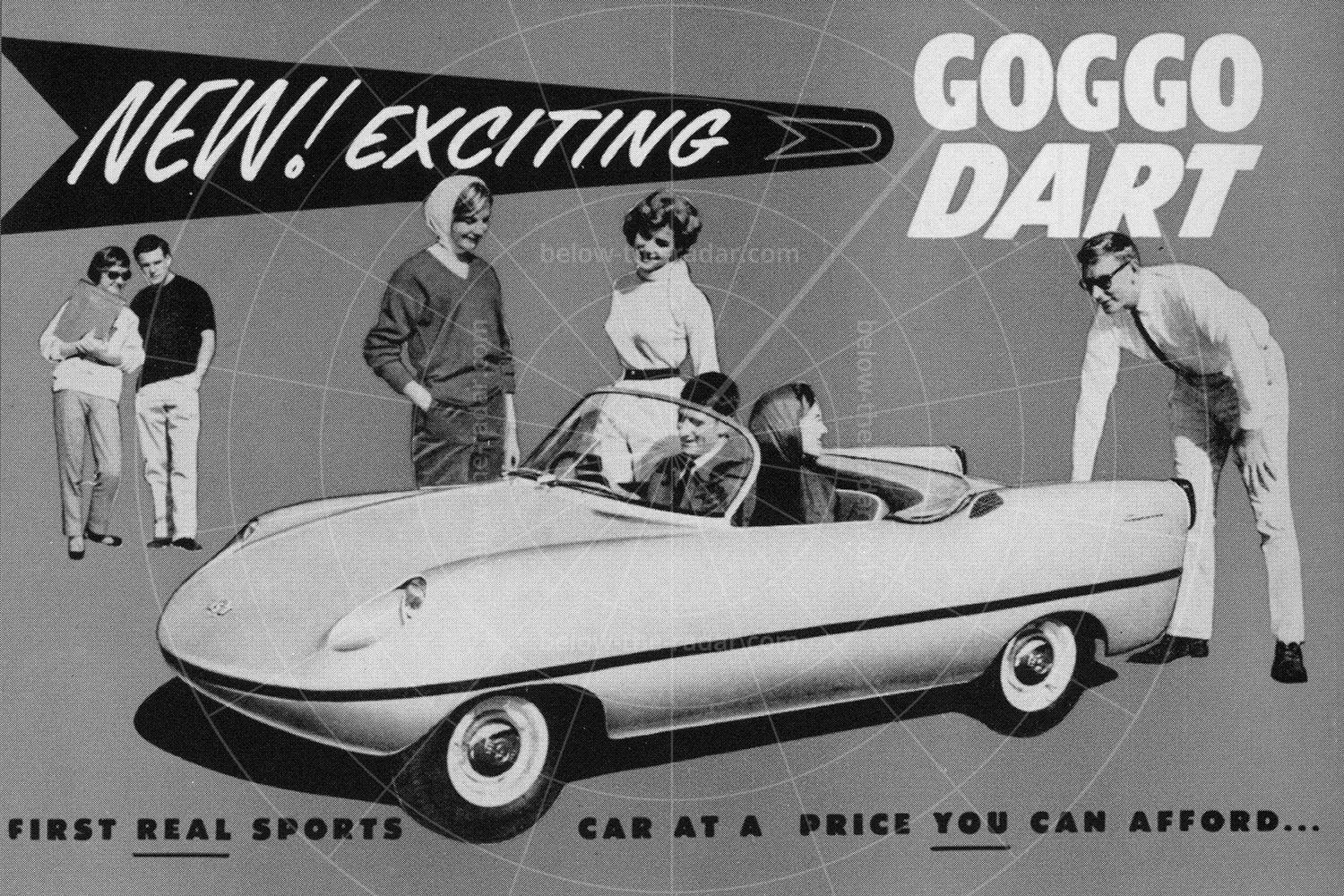In April 2019 Ferrari revealed its latest one-off commission: the P80/C, a modern-day interpretation of the Sports Prototype. The Ferrari Styling Centre, directed by Flavio Manzoni, was tasked with creating a modern Sports Prototype inspired by some of the most iconic models in Ferrari’s history, such as the 330 P3/P4 and Dino 206 S of the 1960s. Although conceived as track cars, the influence of those cars extended far beyond the racing circuit, inspiring a whole series of road-going Ferraris.
The P80/C project started in 2015 and the car was based on the 488 GT3, which was 50mm longer than the 488 GTB that sired it. While the 488 has a classic layout with its cockpit in the middle of the car, the GT3 allowed for a more cab-forward design, with an elongated rear end. A striking wedge shape dominated the front-end design while the curving, muscular shapes of the wings were emphasised by buttresses that merged into the side air intakes feeding the engine.
The tinted wraparound windscreen referenced Ferrari’s earlier Sports Prototypes, while the flying buttresses that converged towards the roof were intended to make the glasshouse resemble a racing helmet visor. Since the P80/C was intended for track use only, its designers had the freedom to dispense with items seen as essential in a road car. For instance, the headlights effectively disappeared; they were reduced to simple slits that recalled the air intakes in the grille of the 330 P3/P4. At the back the rear spoiler incorporated two tail-lights that looked like air vents, reflecting the front design.
The rear end’s ‘catamaran’ style architecture meant there was almost no rear bodywork, allowing the car’s running gear to be fully visible. There was a simple grille to help take heat away from the engine bay, plus a prominent floating rear diffuser. Meanwhile, the concave engine cover with its aluminium louvres represented another clear reference to the Ferrari 330 P3/P4.
The P80/C was made entirely from carbonfibre, which was left bare wherever the parts had a purely technical function. In contrast, the main bodywork was painted in a bright red called Rosso Vero – a name chosen by the unnamed client.
When racing the P80/C was fitted with 18-inch single-nut wheels and a very obvious carbonfibre rear wing, but for exhibition purposes there was a more discreet visual set-up which consisted of 21-inch alloy wheels and with the various aerodynamic appendages removed.
The P80/C's interior was carried over largely unchanged from the 488 GT3, although the roll cage was integrated into the bodywork and the side sections of the dashboard were redesigned, as were the door panels.
As far as the running gear was concerned, Ferrari didn't comment on the engine, transmission, suspension or brakes so presumably they were all carried over unchanged. This meant that a mid-mounted 3996cc twin-turbo V8 sent its 592bhp to the rear wheels via a seven-speed dual-clutch transmission.

